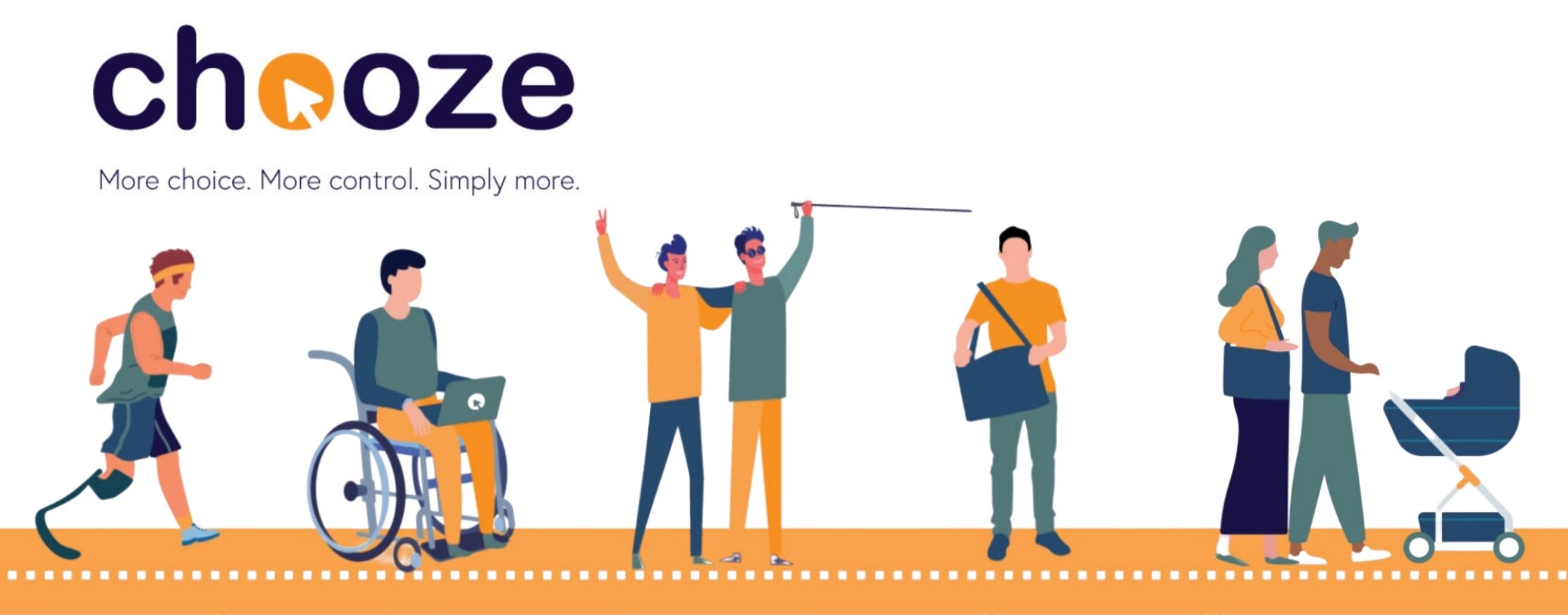Connecting Worlds: How Augmented Reality is Revolutionising Assistive Technology
A young girl sits at a table wearing Virtual reality goggles, she holds her arms up in front of her face.
There are always new developments in assistive technology (AT), and we are often amazed at how much it can change people's lives. From tools that help us in the kitchen to high-tech devices that help us communicate, AT is changing how people navigate their world. It's not just about fancy gadgets; it's also about connecting people and building bridges. Now that Augmented Reality is becoming more common, we're excited about new products that combine AR with the life-changing power of AT, and our friends from Chooze are here to give us a run down.
What is Augmented Reality?
In the world of tech, some terms might sound like they're plucked straight from a sci-fi movie. Augmented Reality, also known as AR, is a good example. But what does it mean?
AR lets you see the world you know, but with added layers of digital information. Imagine being able to point your phone at a bus schedule and get instant updates, or being able to look at a painting and learn about its history. That's AR—blending our real surroundings with handy digital insights.
Now, let's talk about the potential benefits AR can have for accessibility. For many in our community, accessing information or navigating daily life can be challenging. That’s where AR might be able to help. Need clear path directions without constantly checking your phone? AR can overlay them on your glasses, right in your line of sight. Struggle with reading small print on product labels? AR can magnify and read it out for you. Essentially, AR doesn't change our world; it enhances it, making it easier to manage.
Real-World Examples: Bridging Virtual and Physical Realities
Vision Challenges:
The world of AR offers ground breaking help for those with low-vision. Consider AR glasses—ranging from simple to high-tech designs—that can recognize and read out text or identify faces in a crowd. Some glasses can even scan documents and answer questions about a piece of text. There are also navigation apps. These use AR to outline obstacles, making daily commutes or casual strolls safer.
Hard of hearing:
For those who may be hard of hearing, there are smart glasses that can pick up conversations and display subtitles. Spoken words can be turned into visual communications instantly. AR can also provide visual cues for ambient sounds. Noises such as dogs barking or rustling leaves can be shown in the form of soft colour puffs or playful icons.
Cognitive and Learning Disabilities:
Learning becomes a more immersive experience using AR-enhanced tools. It tries to change teaching methods to be more responsive to each student's needs. Imagine a classroom where complex ideas are not just told but shown and experienced, like how tides in the ocean work via a 3D virtual model. A maths problem isn't just an equation, but something you can interact with. For example, a student who is having trouble with geometry can use AR to see 3D shapes in real space, which helps them understand sizes and angles. AR makes it possible for learning to take many forms. Visual guides can be made for people who learn best by seeing, and audio experiences can be made for people who learn best by hearing.
Mobility Challenges:
For many, the physical world can sometimes feel distant. Augmented and Virtual realities offer virtual experiences, allowing users to ‘visit’ incredible locations. Ever dreamed of exploring the Great Barrier Reef but found the trip too daunting? AR makes it possible for people to virtually "dive" into these experiences and explore the underwater world from home. AR-enhanced physical therapy tools can also "gamify" exercises. AR can transform routine exercises into fun activities while still being effective. Imagine putting on some AR glasses and seeing a game where you're catching floating orbs. What feels like play actually aids in muscle strengthening and improving coordination!
The Power of Immersive Experiences
AR is still in its early stages, but it holds great potential! AR & AT products offer something exciting: immersion. AR can help people feel like they belong, whether they are a kid exploring a digital version of a forest for school or someone who has trouble hearing reading conversation subtitles in real time.
Challenges and The Future
As exciting as the integration of AR into AT seems, it's not without its challenges. The high-tech nature of some AR tools may mean they come with a steeper price tag. There’s also a learning curve involved, as with any new technology.
The main goal, though, remains clear: to use AR in ways that improve the quality of life for people with disabilities. AR will continue to improve and become more widely available. Its integration into AT will most likely become more seamless, leading to a better experience. In the future, we can expect more AR solutions that are tailored to each person’s needs. This will make sure that everyone, no matter their challenges, feels empowered and included.
There are so many amazing possibilities when it comes to AR and AT; this is just the beginning! Share your thoughts, hopes, or experiences about AR in the assistive technology space on Kinora.
The Chooze Shop believe that everyone, regardless of their disability, should have easier access to the tools and resources they need to live their lives to the fullest.
It’s always a good idea to seek advice and information about any assistive tech you are considering, to ensure it meets your needs and is safe. Talk to AT experts such as your occupational therapist or anyone on your treating health team.
The Chooze logo and the words “More choice. More control. Simply more.” Below is a cartoon orange road, with various people on it using different types of assistive technology.



